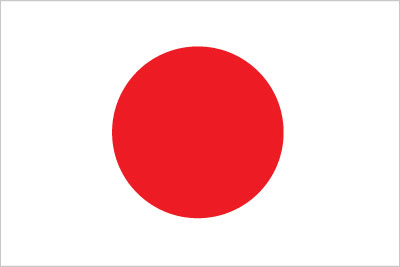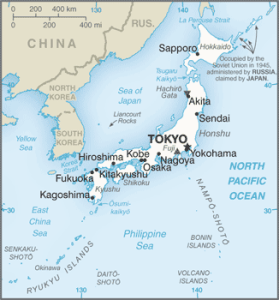Exporting to Japan


Japan Country Profile
Official Name (Local Language) Nihon-koku; Nippon-koku
Capital Tokyo
Population 126,702,133
Currency Japanese Yen
GDP $4,730 billion
Languages Japanese
Telephone Dial In 81
Japan Imports Profile
Exports ($m USD) 671,474
Number of Imports Products 4,426
Number of Imports Partners 213

Japan Economic Statistics
Government Website | https://www.japan.go.jp/ |
| Sovereign Ratings | https://countryeconomy.com/ratings/japan |
| Central Bank | Bank of Japan |
| Currency USD Exchange Rate | 107.1 |
| Unemployment Rate | 3.2% |
| Population below poverty line | 16.1% |
| Inflation Rate | -0.1% |
| Prime Lending Rate | 0.3% |
| GDP | $4,730 billion |
| GDP Pro Capita (PPP) | $38,900 |
| Currency Name | Japanese Yen |
| Currency Code | JPY |
| World Bank Classification | High Income |
| Competitive Industrial Performance | 8/138 |
| Corruption Perceptions Index | 20/180 |
| Ease of Doing Business | 39/190 |
| Enabling Trade Index | 16/190 |
Access trade, receivables and supply chain finance
We assist companies to access trade and receivables finance through our relationships with 270+ banks, funds and alternative finance houses.
Get StartedExporting to Japan
Recognised as the fourth most affluent country in the world Japan imported more than $640 billion worth of products last year. This number reflected a significant downward trajectory however with importing falling by 15% in recent years. A significant factor in this drop is the decrease in value of mineral fuels, with imports from Saudi Arabia and the United Arab Emirates reducing by 40% during that period.
Annual imports in Japan averaged 2750 JPY billion between 1960 and 2015 (1 USD = appx 110 JPY) with figures as high as 8000JPY billion in recent years. Major imports include mineral fuels (30%), machinery (over 20%) and petroleum (15%) while major import partners include China ($160 billion US), the United States ($65 billion) and Australia ($45 billion).
Exporting to Japan: What is trade finance?
Trade finance is a revolving facility which alternative financiers offer – it enables SMEs to buy stock and can help ease the pressure from cash flow issues.
Typically, an alternative financier will fund most of the cost of the product, including charges (e.g. VAT charges).
Trade finance offers upsides over more traditional bank finance such as bridging mortgages or loans. Trade finance provides quick funding without affecting existing relationships with banks.
How Trade finance is a revolving facility which alternative financiers offer – it enables SMEs to buy stock and can help ease the pressure from cash flow issues.
Typically, an alternative financier will fund most of the cost of the product, including charges (e.g. VAT charges).
Trade finance offers upsides over more traditional bank finance such as bridging mortgages or loans. Trade finance provides quick funding without affecting existing relationships with banks.
How does it work?
If you’re a firm importing or exporting inventory internationally, then a trade finance facility would allow you to fund this through offering a LC (letter of credit) or some form of cash advance.
I’m looking to export to Japan, how can Trade Finance Global help, and how does it work?
If you’re looking to export stock supplies to other markets, you may need export finance, which is an agreement between you (the exporter), and the importer from overseas. A non-bank lender will advance you the cost of producing the products that you’re exporting (as a debt instrument), either once you have shipped the goods, or before you have produced them. Once your foreign importer has received the inventory and pays you for the import, you will repay the advance loan from the lender over an agreed period of time.does it work?
If you’re a firm importing or exporting inventory internationally, then a trade finance facility would allow you to fund this through offering a LC (letter of credit) or some form of cash advance.
I’m looking to export to Japan, how can Trade Finance Global help, and how does it work?
If you’re looking to export stock supplies to other markets, you may need export finance, which is an agreement between you (the exporter), and the importer from overseas. A non-bank lender will advance you the cost of producing the products that you’re exporting (as a debt instrument), either once you have shipped the goods, or before you have produced them. Once your foreign importer has received the inventory and pays you for the import, you will repay the advance loan from the lender over an agreed period of time.
Chart Showing GDP Growth Compared to rest of world
GDP Composition for Japan
Agriculture
1.2%
Vegetables, rice, fish, poultry, fruit, dairy products, pork, beef, flowers, potatoes/taros/yams, sugar cane, tea, legumes, wheat and barley
Industry
27.7%
Motor vehicles, electronic equipment, machine tools, steel and nonferrous metals, ships, chemicals, textiles, processed foods
Services
71.1%
Map
Top 5 import Partners
| Country | Trade | % Partner Share |
| United States | 135,060 | 19.35 |
| China | 132,786 | 19.02 |
| Korea, Rep. | 53,308 | 7.64 |
| Other Asia, nes | 40,664 | 5.82 |
| Hong Kong, China | 35,437 | 5.08 |
Top 5 import Products
| Export Product | Number |
| Petroleum oils and oils obtained from bituminou | 9.5% |
| Natural gas, liquefied | 6.0% |
| Transmission apparatus, for radioteleph incorpo | 3.7% |
| Bituminous coal, not agglomerated | 3.4% |
| Monolithic integrated circuits, digital | 2.9% |
Local Partners
- All Topics
- Japan Trade Resources
- Export Finance and ECA Topics
- Local Conferences



















